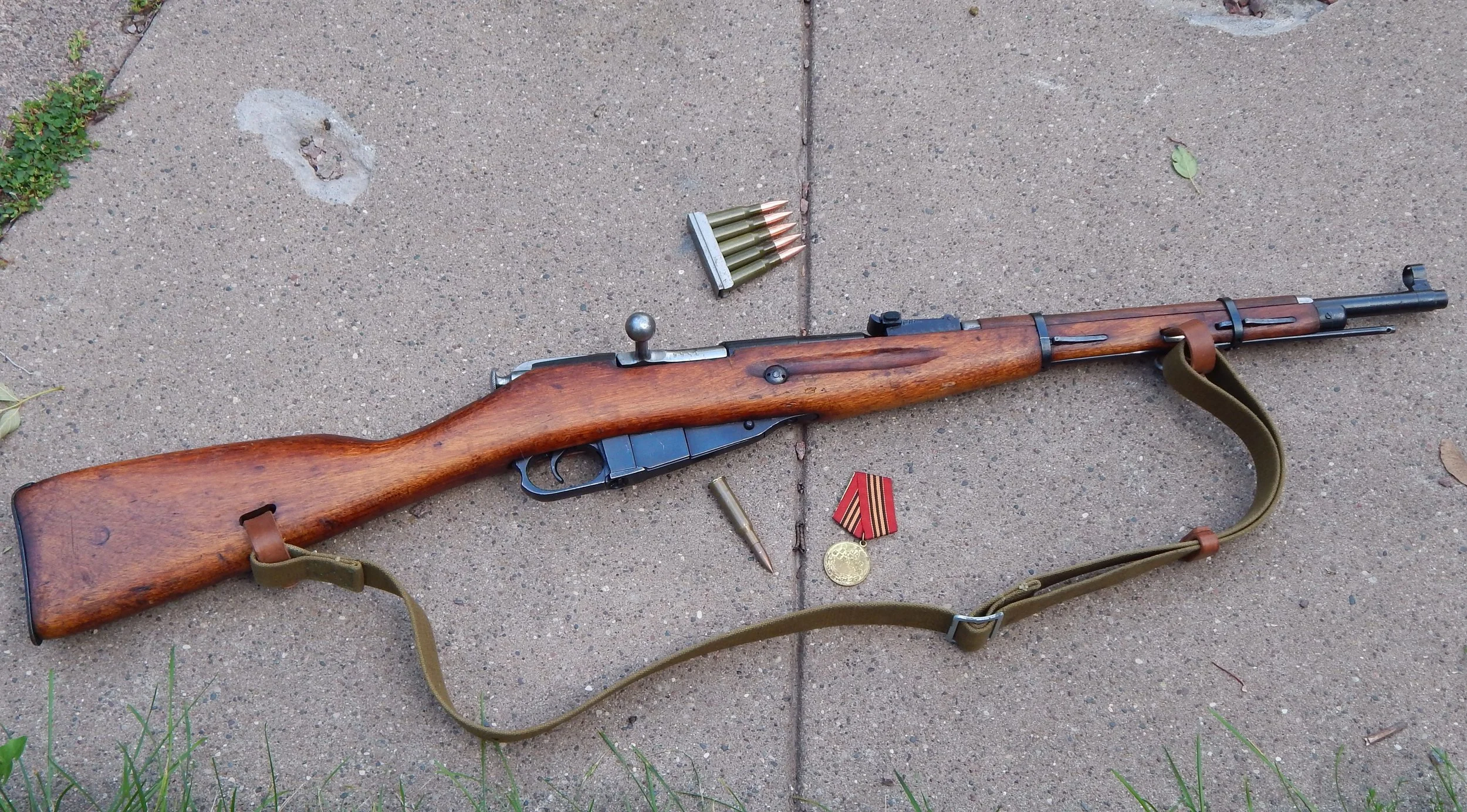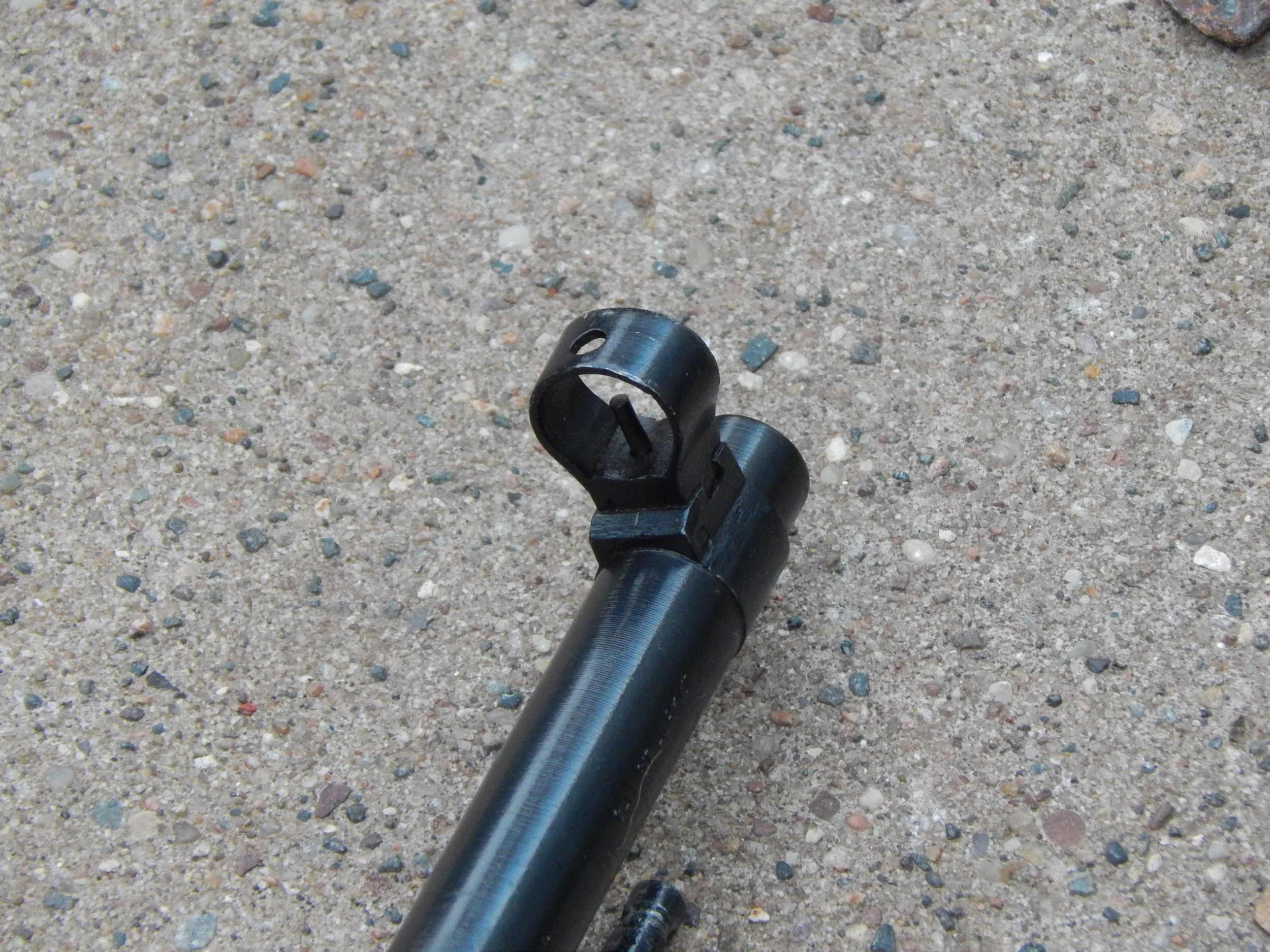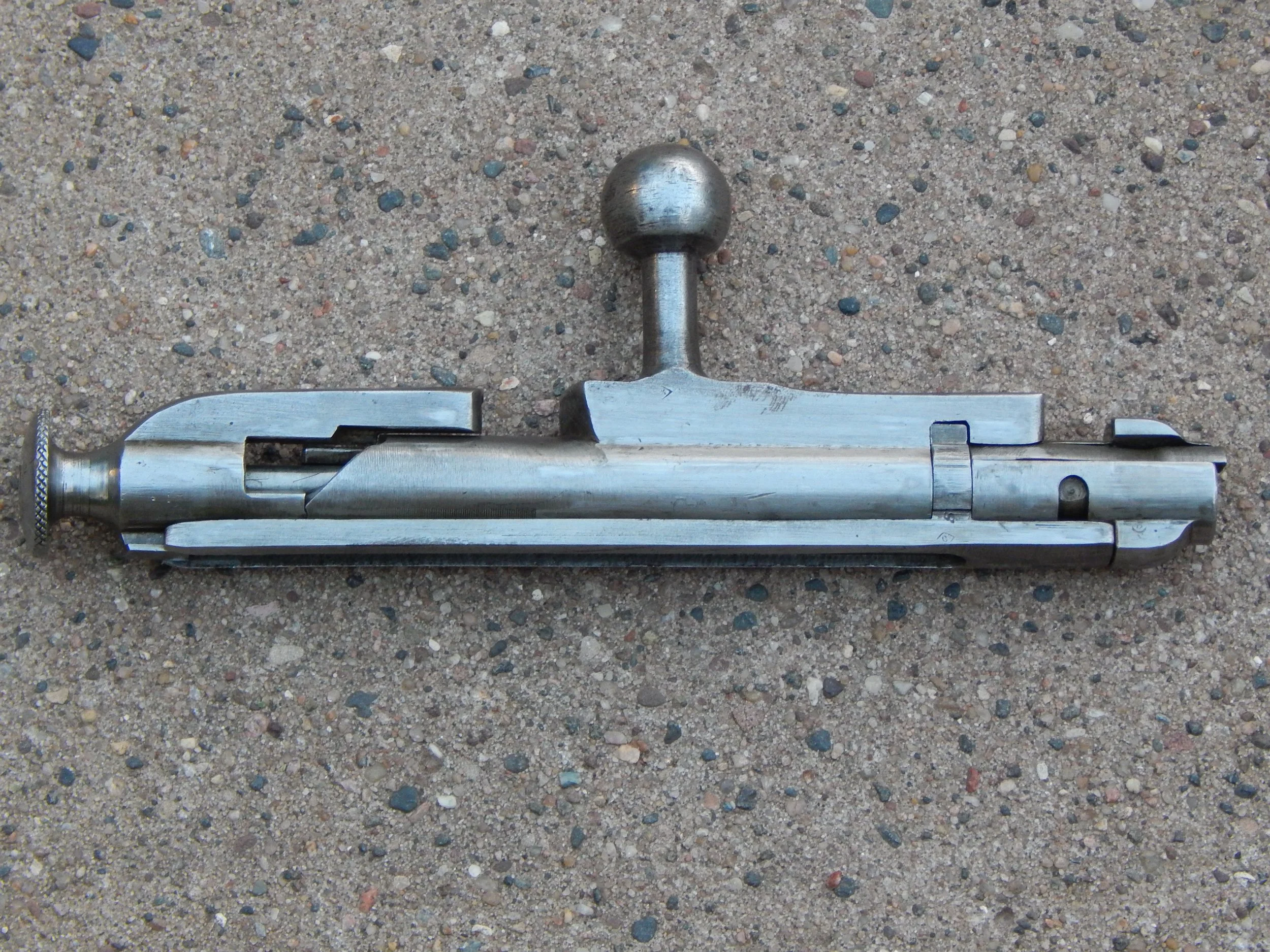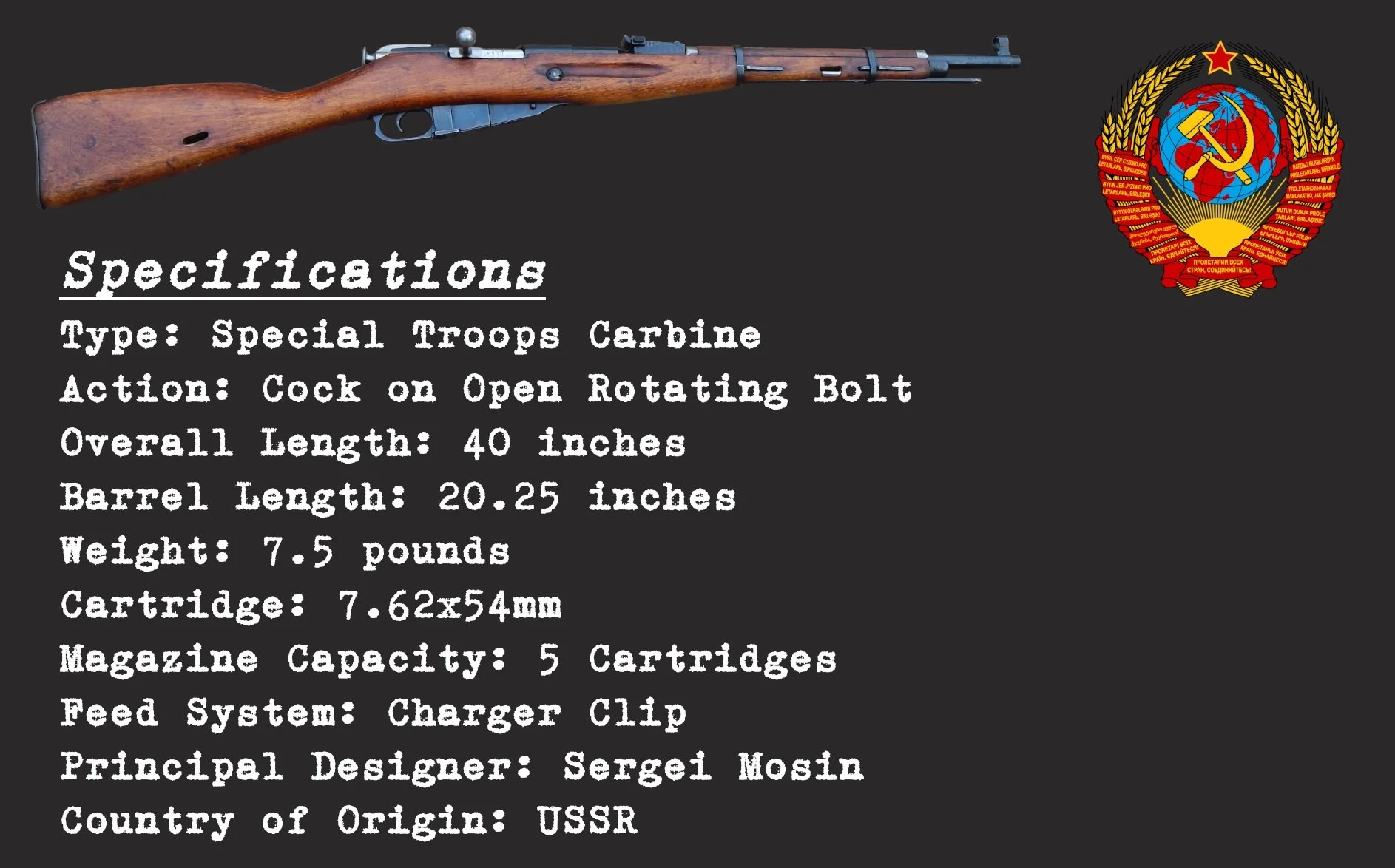Mosin Nagant M38
The Soviet M38 was intended for issue to specialists and non-combat troops, but its handy nature made it a popular choice in the brutal urban combat that came to characterize the popular image of the Second World War’s Eastern Front.
In the 1920s the newly minted Union of Soviet Socialist Republics began a program to update their stocks of Mosin Nagant rifles, chiefly to replace the older M91 infantry rifle with the slightly handier dragoon variant, but by 1930 a series of upgrades to that model were formalized. Thus the M91/30 entered service, incorporating a number of updates, most notably a simpler, sturdier rear sight graduated in meters, as well as a simpler rounded receiver in place of the earlier polygonal version (the so called “hex receiver”. A need was also seen for a carbine to replace the scarce and by now aged M1907 models, left over from the Tsarist period, which led to the adoption of the M38 in 1939.
The History
The rear sight of the M38 is a downsized version of that used on the M91/30 rifle, and graduated from 200 to 1,000 meters
The program to replace the M1907 carbines led to a new carbine built in the M91/30 pattern, which was in effect nothing more than a shorter version of the infantry rifle, eschewing the specialized sights of the older carbine for shortened versions of the 1930 rifle. The new carbine was designated for issue to cavalry and various support troops, such as engineers and artillerymen among others.
Production was commenced in 1939 at the Izhevsk plant, with Tula following in 1940 (the latter ceasing that same year, making Tula M38s quite rare, with only the 1940 and another batch in 1944 produced), with the new carbine seeing its first deployment in Poland in late 1939 in small numbers before seeing its first real action in the Winter War of 1939-40 with Finland. Due to the time frames involved, the new carbines were not available in large numbers for these conflicts, and would really only begin to see widespread service in the summer of 1941, after the German invasion of the USSR.
The front sight is very similar to the M91/30, being a hooded post. Notably, it is not configured to accept a bayonet
During the ensuing “Great Patriotic War” the M38 would soon find itself in frontline service, in particular as the war found itself in bitter melees on bomb shattered city streets. The compact carbines proved far more useful in these tight urban areas than the longer M91/30 rifles, despite their lack of provision for a bayonet, and as early as the Battle of Stalingrad the M38 was being issued to assault units in tandem with the iconic PPSh41 submachine gun in place of the full length rifle. The popularity of the carbine would lead to the adoption of the M44 in 1944, which was essentially just an M38 with a permanently fixed side folding spike bayonet intended for infantry use. These would enter service in time for the final major battles in Germany, but would not supplant the M38 before the end of the war.
The receiver of the M38, essentially identical to the basic M91/30
The M38 remained in service, mostly back in its support role, after the end of the war, its ranks bolstered by the M59 carbine as well (these were M91/30s cut down to M38 length), but the M44 effectively replaced it in actual combat service when the war ended. Its lineage would continue through the M44, however, with production across the Warsaw Pact as well as in China, the latter M53 seeing heavy use in the Vietnam War.
The Design
The markings of the rifle are located on the barrel shank, as is commin with Mosin Nagant rifles. In this case, they indicate the rifle was produced by the Izhevsk plant in 1943
The M38 is, as mentioned above, essentially just an M91/30 with a shorter barrel. Essentially everything behind the rear sight is identical and interchangeable with the full length rifle, with the basic Mosin action and magazine retained, with all the attendant flaws. The Mosin Nagant rifle was designed to be easy to mass produce with the relatively primitive industrial capabilities of Imperial Russia in the late 1880s, and while this was achieved it was at the expense of the end user. The Mosin Nagant is fairly complicated mechanically, with its bolt and magazine having a larger number of working parts than many contemporaries, and these combined with loose tolerenaces to result in a wide variety of fit and finish, even among individual rifles from the same factory and time frame.
As a carbine, the M38 is eight inches shorter than the M91/30, as well as 1.25 pounds lighter. It has a slightly different front sight, which has a notably wider base than the rifles, as well as being located closer to the muzzle, indicative of the lack of bayonet fitting. The rear sight is essentially the same as the rifle, albeit about half the length and only graduated up to 1,000 meters.
This Example
The safety, as will all Mosin Nagant rifles, is engaged by drawing back the cocking piece and resting it on a cut in the receiver
The example seen here was produced at the Izhevsk arsenal in 1943, and is a typical mid-war example of the type. Notably, it retains both its original, wartime stock and that stock appears to have avoided the post-war refinishing process that effected many of these rifles. The indicative features of an original wartime M38 stock are the simplified sling slots, with the rear lacking the metal escutcheons of early or later types, as well as lacking the relief cut on the right side for the M44 bayonet, which is commonly encountered on M38s refurbished and placed into later stocks. The rifle does, however, feature the commonly encountered mismatching serial numbers on almost all components.
Opinions
The bolt of the M38, identical to all other Mosin Nagant bolts aside from the bent-bolt snipers
The M38 is probably the most entertaining model of the Mosin Nagant family to shoot. Its relatively light weight and handy length combine well with its cartridge to allow for a cannon-like experience, with a spectacular fireball when firing. As far as practicality is concerned, the M38 is, in the opinion of the author, most definitely superior to the longer rifles, as well as the M44. The M44, for its part, is notably front heavy and poorly balanced when compared to the M38.
The sights are easy to acquire, and this example is relatively smooth and reliable as Mosin Nagants go as well. All in all, the author is of the opinion that the M38 is certainly the best Russian/Soviet variant of the Mosin rifle, and possibly of all the models for sheer practicality and enjoyability.
A Soviet field gun crew in action in Stalingrad. The crewman holding the shell has an M38 carbine slung across his back
Observed Values and Frequency
Updated: February, 2024
AVERAGE VALUE (USD): $450 - $600
FREQUENCY: Common
COLLECTOR’S NOTES: Unrefurbished examples command a premium
Many will have a later M44 pattern replacement stock, identified by the bayonet cutout above the right side grasping groove








